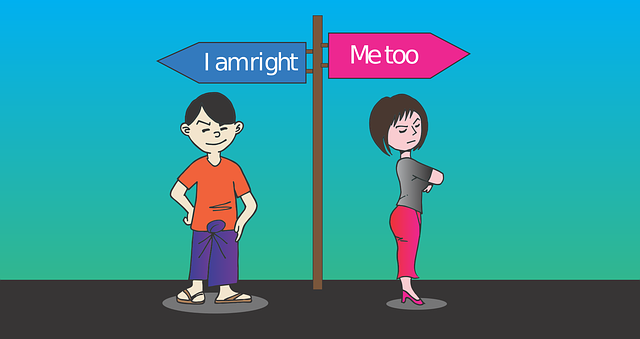The text compares Wegovy and Ozempic, two semaglutide-based medications for weight control, highlighting their differences in delivery methods and mechanisms. Key distinctions lie in their formulation (injectable vs. oral/injectable), administration routes (weekly vs. daily injections), and effects on satiety and blood sugar regulation. Clinical trials show both are effective for weight loss but have unique side effect profiles; Wegovy has higher GI risks, while Ozempic carries hypoglycemia risk with other glucose-lowering drugs. The choice between them depends on individual needs, lifestyle, and medical history, emphasizing the importance of understanding these differences when deciding between Wegovy versus Ozempic for weight management.
“Exploring the weight management landscape, we delve into a comparison of two prominent prescription medications: Wegovy and Ozempic. Both offer innovative approaches to combating obesity, but how do their dosage forms differ? This article navigates through the intricate details, from understanding their mechanisms to examining effects on satiety and appetite, benefits, safety profiles, and patient preferences. Discover which treatment might be the game-changer for effective weight management in today’s healthcare realm, as we uncover the nuances of Wegovy versus Ozempic.”
Understanding Wegovy and Ozempic: Their Purposes and Mechanisms

Wegovy and Ozempic are both prescription medications designed for weight management, but they differ significantly in their dosage forms and mechanisms of action. Wegovy (semaglutide) is a injectable medication that belongs to a class of drugs called glucagon-like peptide-1 (GLP-1) receptor agonists. It works by mimicking the effects of a natural hormone produced by your body, slowing digestion and reducing hunger, leading to decreased food intake and increased feelings of fullness.
Ozempic (semaglutide) is also in the GLP-1 class but is available as both an injection and a once-daily oral tablet. The injectable form functions similarly to Wegovy by targeting the GLP-1 receptors, whereas the oral formulation uses a different delivery system to achieve weight management effects. Understanding these differences is crucial when comparing Wegovy versus Ozempic for effective weight control.
Comparison: Dosage Forms and Administration Routes

When comparing Wegovy and Ozempic, a notable difference lies in their dosage forms and administration routes. Wegovy, an injectable semimembranous hormone, is administered subcutaneously once weekly, offering convenience with just one injection per week. This form is ideal for patients who prefer fewer injections or have difficulty adhering to daily insulin regimens.
Ozempic, on the other hand, presents as a once-weekly injectable medication that contains a glucagon-like peptide-1 (GLP-1) receptor agonist. Similar to Wegovy, it’s also given subcutaneously, but its formulation allows for flexibility in dosing. This can be advantageous for patients with varying metabolic needs, as the dosage can be adjusted weekly based on individual responses.
Effects on Satiety and Appetite Regulation

Wegovy and Ozempic, both prescription weight-management medications, work differently to promote satiety and appetite regulation. Wegovy (semaglutide) is a glucagon-like peptide-1 (GLP-1) receptor agonist that mimics the natural hormone GLP-1. This hormone signals the brain to reduce hunger and increase feelings of fullness, leading to decreased food intake. In clinical trials, Wegovy demonstrated significant effects on satiety, helping individuals consume fewer calories and resulting in substantial weight loss.
Ozempic (semaglutide) is also a GLP-1 receptor agonist like Wegovy, but it has a slightly different mechanism of action. While both medications enhance insulin secretion and suppress glucagon release, Ozempic’s primary mode of action involves prolonging the duration of satiety signals sent to the brain. This results in reduced appetite and delayed hunger sensations. Clinical studies showed that Ozempic effectively lowered body weight, with patients reporting improved control over their appetite and overall better adherence to a reduced-calorie diet.
Benefits and Considerations for Weight Management

When comparing Wegovy and Ozempic for weight management, both medications offer unique benefits. Wegovy, with its once-weekly injection, provides convenience by eliminating the need for daily injections, which can be a significant advantage for those who struggle with adherence. Additionally, it has shown effective results in clinical trials, helping individuals achieve substantial weight loss. On the other hand, Ozempic, an everyday injection, offers continuous blood sugar control as initially designed for type 2 diabetes management. This regular administration can lead to more consistent weight loss outcomes over time.
Considerations for choosing between Wegovy and Ozempic involve individual patient preferences and health conditions. Wegovy might be preferred by those seeking a simpler routine while Ozempic could be better suited for patients already managing diabetes, as it maintains stable blood sugar levels alongside weight loss. The choice ultimately depends on personalized needs, ensuring the prescribed medication aligns with lifestyle and existing medical conditions for effective and safe weight management.
Safety and Side Effects: A Comprehensive Look

When comparing Wegovy and Ozempic, understanding their safety profiles is paramount for patients considering weight management options. Both medications are semi-synthetic analogues of glucagon-like peptide-1 (GLP-1), but they differ in formulation and administration. Wegovy (semaglutide) is available as a once-weekly injection, while Ozempic (semaglutide) is administered once daily via injection.
Similar to other GLP-1 receptor agonists, both drugs can cause side effects such as nausea, vomiting, diarrhea, and constipation. However, Wegovy has been associated with higher rates of gastrointestinal disturbances due to its longer half-life. Other potential safety concerns with Wegovy include pancreatitis and kidney problems, though these remain relatively rare. Ozempic, on the other hand, may be more likely to cause hypoglycemia when used in conjunction with insulin or other glucose-lowering medications. As with any prescription medication, patients should weigh these risks against the potential benefits before deciding on a weight management strategy involving Wegovy or Ozempic.
Patient Preferences and Healthcare Provider Recommendations

When comparing Wegovy and Ozempic, patient preferences and healthcare provider recommendations play a significant role in choosing the most suitable weight management medication. Both drugs are semaglutide-based, but they differ in formulation and administration method. Wegovy, for instance, is available as a once-weekly injection, which many patients find more convenient compared to Ozempic’s daily injection routine. This ease of use can enhance adherence to the treatment plan, a crucial factor in achieving successful weight loss outcomes.
Healthcare providers also consider these differences when making recommendations. They take into account patient lifestyles, preferences, and medical histories to guide their choices. For patients who value convenience and prefer less frequent injections, Wegovy might be the preferred option. Conversely, Ozempic could be recommended for those willing to commit to a daily dosing regimen, as it has shown comparable efficacy in clinical trials. Ultimately, the decision between Wegovy versus Ozempic should align with individual needs and preferences, ensuring the best chance of long-term success in weight management.
